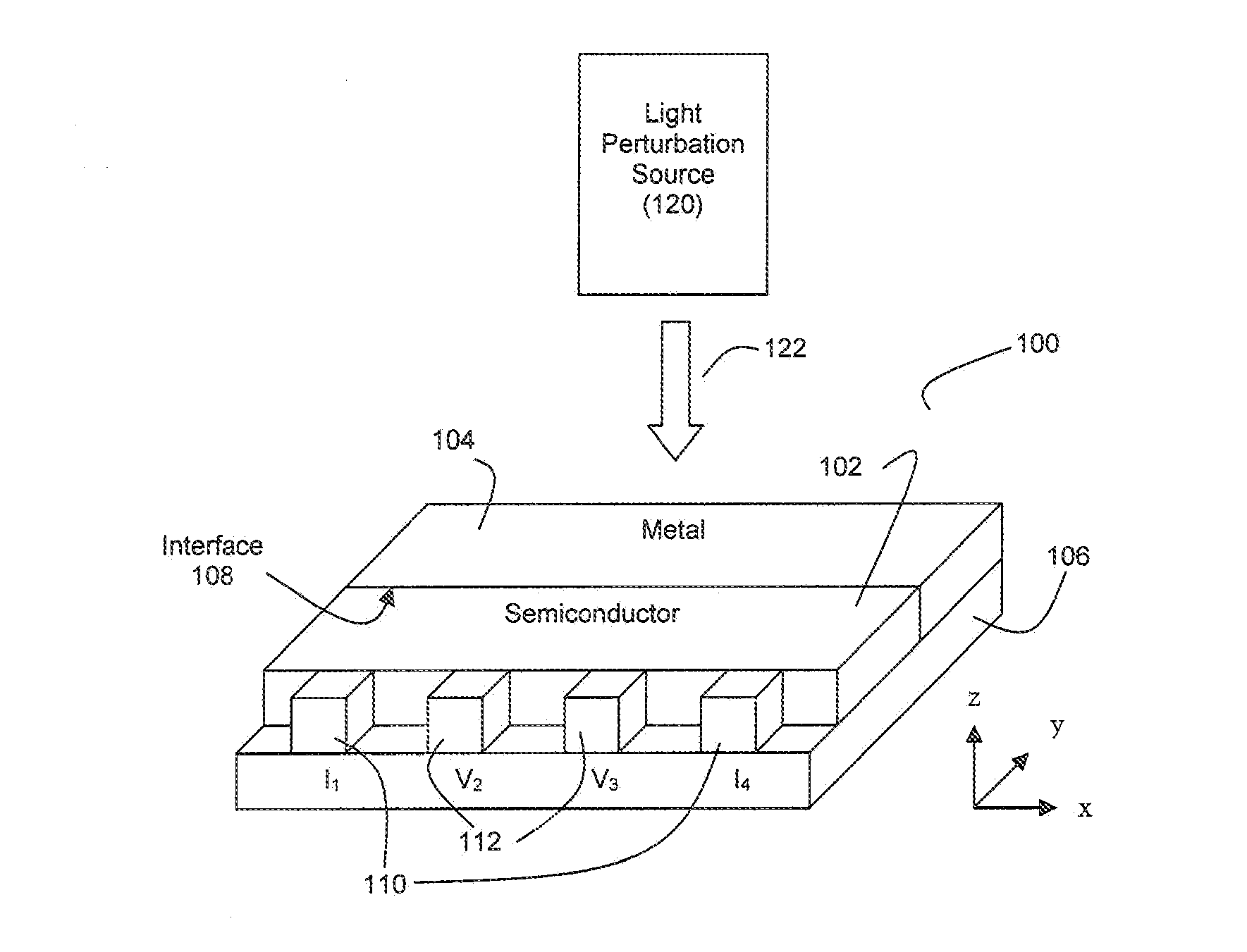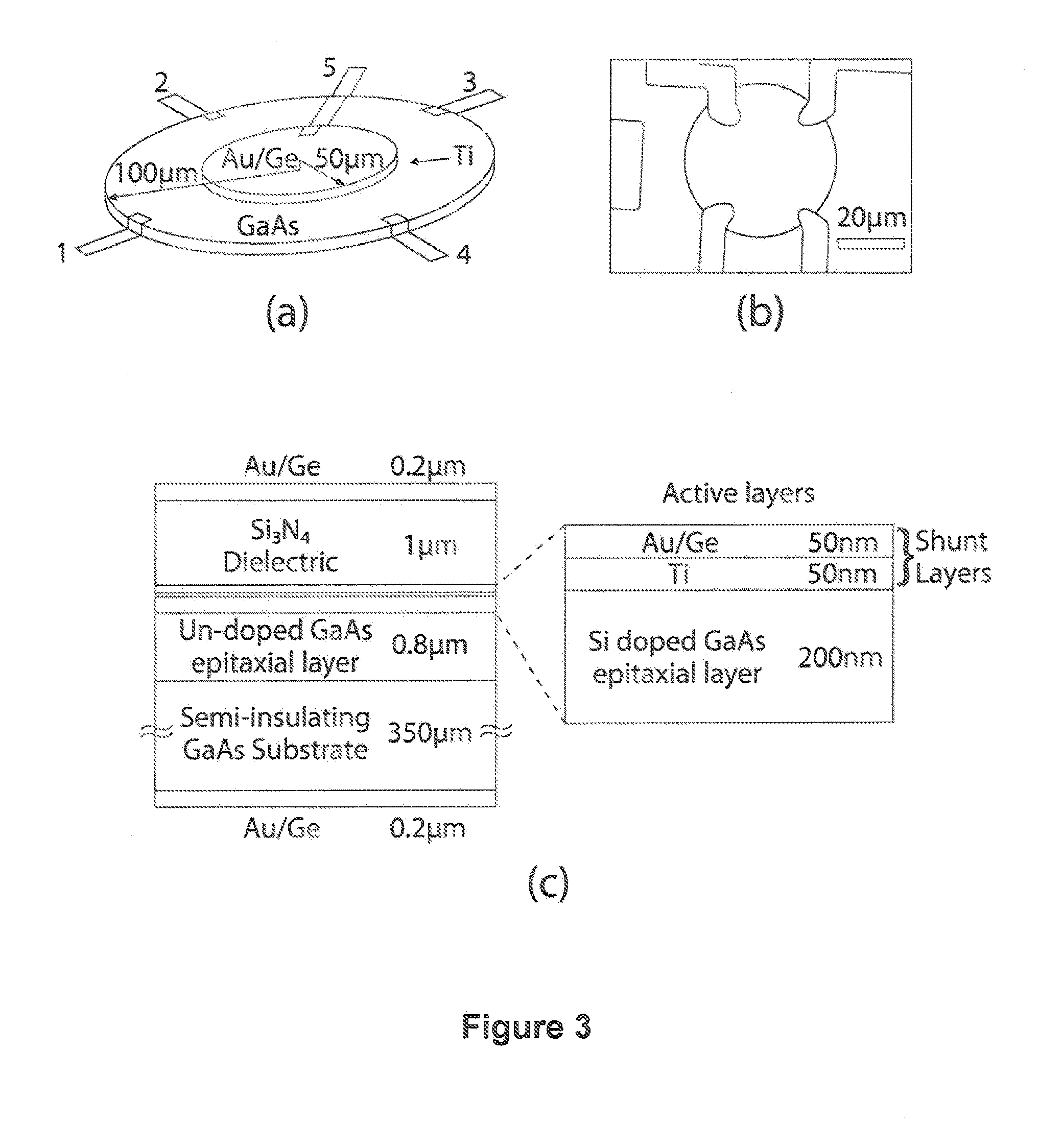Method and Apparatus for High Resolution Photon Detection Based on Extraordinary Optoconductance (EOC) Effects
a technology of optoconductance and high-resolution photons, applied in the direction of photoelectric discharge tubes, instruments, radioation controlled devices, etc., can solve the problems that nanowire-based nanophotonic devices are not currently compatible with very/ultra large-scale integration (vlsuulsi) fabrication methods, and achieve significant sensitivity in the visible light spectrum
- Summary
- Abstract
- Description
- Claims
- Application Information
AI Technical Summary
Benefits of technology
Problems solved by technology
Method used
Image
Examples
Embodiment Construction
[0034]FIG. 4 depicts an exemplary MSH device 200 that can be employed as an EOC sensor in accordance with an embodiment of the present invention. As shown in FIG. 4, the EOC sensor 200 is an MSH device comprising several layers, including a semiconductor portion 202 and a metal shunt portion 204. The metal shunt portion 204 is disposed on a surface of the semiconductor portion 202, and the semiconductor portion 202 is disposed on a surface of substrate 206 such that the semiconductor portion 204 is sandwiched between the metal shunt portion 202 and the substrate 206. As shown in FIG. 4, the metal shunt portion 204, the semiconductor portion 202, and the substrate portion 206 preferably lie in substantially parallel planes. Together, the contact between the metal shunt portion 204 and the semiconductor portion 206 define a semiconductor / metal interface 208. Thus, unlike the EOC sensor architecture described in the related and above-referenced patent applications, the plane of the sem...
PUM
 Login to View More
Login to View More Abstract
Description
Claims
Application Information
 Login to View More
Login to View More - R&D
- Intellectual Property
- Life Sciences
- Materials
- Tech Scout
- Unparalleled Data Quality
- Higher Quality Content
- 60% Fewer Hallucinations
Browse by: Latest US Patents, China's latest patents, Technical Efficacy Thesaurus, Application Domain, Technology Topic, Popular Technical Reports.
© 2025 PatSnap. All rights reserved.Legal|Privacy policy|Modern Slavery Act Transparency Statement|Sitemap|About US| Contact US: help@patsnap.com



